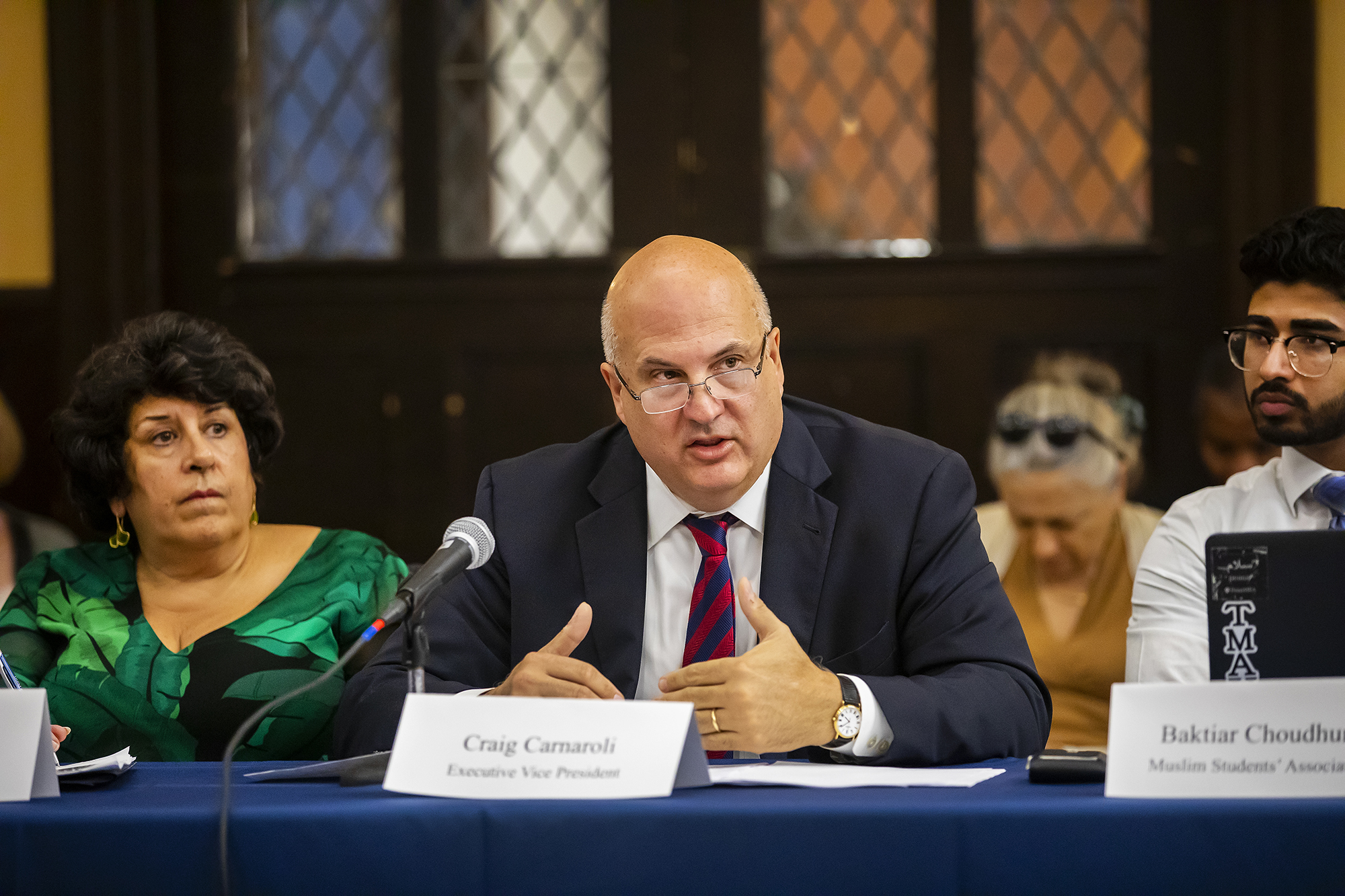Executive Vice President Craig Carnaroli and Anne Papageorge, the vice president for Facilities and Real Estate Services, addressed Penn President Amy Gutmann, Provost Wendell Pritchett, and members of the University Council at a meeting on Wednesday, Oct. 23, outlining the successes of campus sustainability efforts over the last five years, and presenting the goals in Penn’s Climate and Sustainability Action Plan 3.0.
Since the release of the original Climate Action Plan in 2009, Penn has built on its greening efforts in five-year increments. This iteration addresses the existential threat of climate change. Introducing Carnaroli, Gutmann remarked that CSAP 3.0 “mobilizes the entire University,” and goes so far as to pledge “100 by 42,” or for Penn to be 100% carbon neutral by 2042. “The timing couldn’t be better,” Gutmann added.
“At the heart of Penn is teaching, education, and research,” Carnaroli said, noting that CSAP 3.0 adds the elements of facilities, transit, waste management, investments, business contracts, green spaces, and the City of Philadelphia. A key focus, he continued, is the University’s efforts to reduce its carbon footprint, especially with regard to its energy consumption, by negotiating a new energy contract, likely from a renewable resource.
In the academic field, Penn has launched the Penn Sustainability Initiative to focus on interdisciplinary research, and recruiting eminent faculty to develop educational programs, and promote new communication pathways so the Penn community can easily share what they are doing to promote sustainability across schools and departments.
Carnaroli said there is a push to create a socially responsible fund for University investments. Penn is also looking into partnering with the City to source a renewable transit fleet. A request for proposals has been issued for a plan to reduce and reuse food waste. “This year, Convocation was a waste-free event,” Carnaroli said, and the plan is for this to be a trend for everyday practices.
“The number of faculty and staff who commute via alternative means to single-occupancy vehicles has reached 50%,” said Papageorge. There are a growing number of internships for students to work for regional sustainability goals, through the City and the region. In looking outside campus, the number of student internships with City offices focused on sustainability goals continues to grow.
One of the more aesthetic sustainability pushes has been a commitment to an even more “green” campus. Carnaroli noted Penn has been lauded as one of the most green urban campuses, and there has been a continual effort to improve landscape design with ecology and sustainability in mind. In all, there are 34 green roofs on campus, and more than 25 LEED designated buildings. In fact, Penn’s main campus is now a certified Level II Arboretum, meaning the University community regularly works and studies in an urban forest.
When it comes to waste management, diversion from landfills is a focus. Through Student Eco-Reps, sorting waste, and recycling and composting, to reuse goals set by PennMoves during Move-out, Power Down and ReThink Your Footprint, Carnaroli said all these campaigns and groups together have increased Penn’s overall waste diversion by 28%, while waste-to-energy incineration has reduced landfill waste from campus by a staggering 80%.
At the end of Carnaroli’s presentation, a question was raised: How does Penn plan to address the biggest carbon impact on campus—the electric load? Gutmann issued a request. “How can we encourage and incentivize people on an individual level?” Citing the evidence that turning off all screens, phones, and electronics at night is not only good for energy consumption but for health and wellness, Gutmann encouraged the Council to pool ideas and resources and find solutions to encourage individuals to power down, for their good and the good of the planet.









